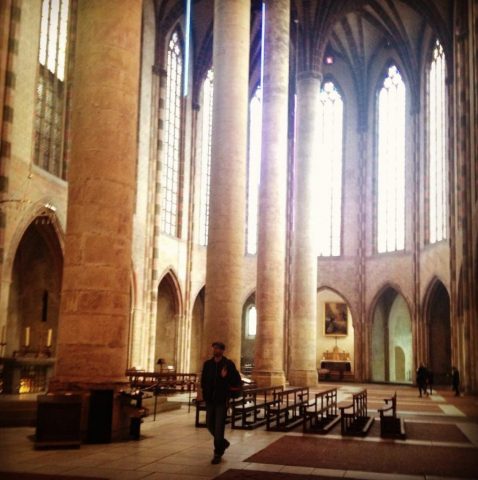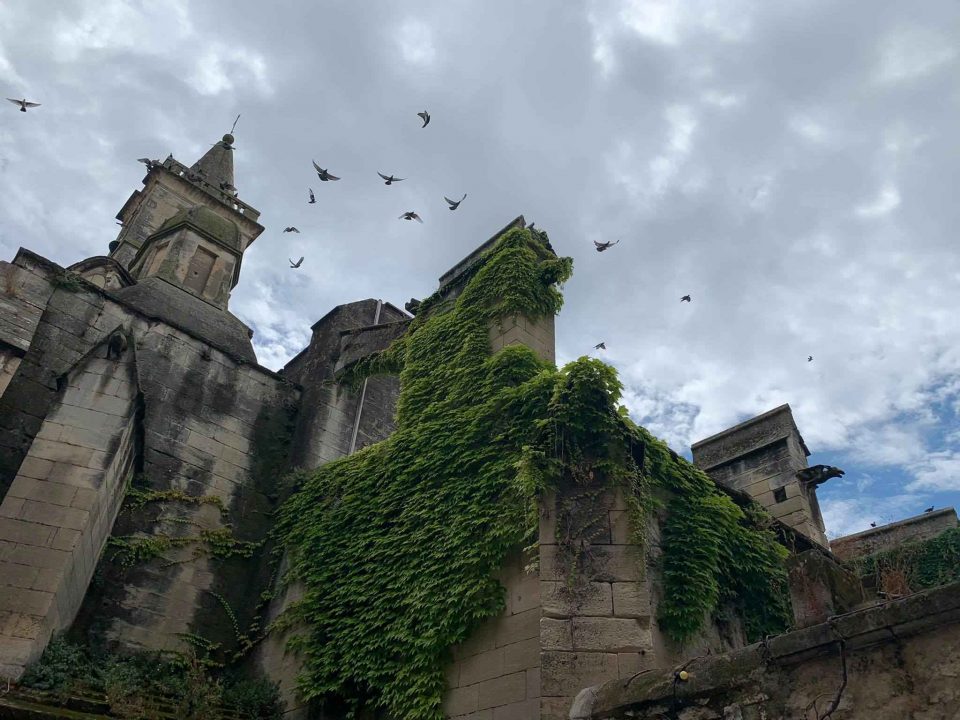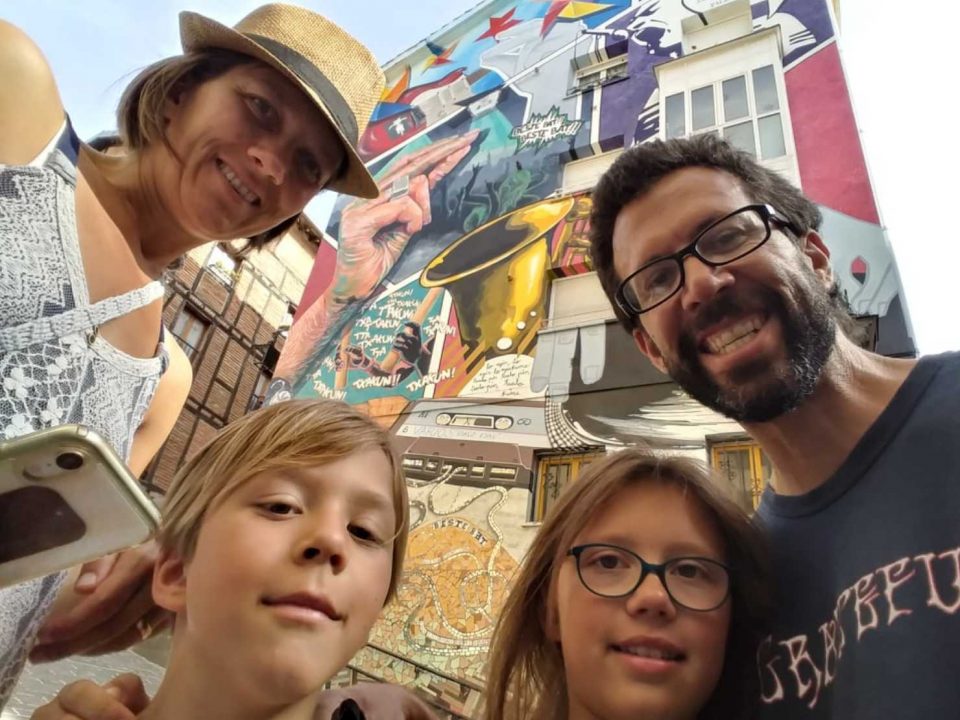
The Esoteric Tourist in search of Meister Eckhart
March 27, 2019
US Tax Tips for Digital Nomads
April 3, 2019“Kill ‘em all. Let God sort ‘em out.”
If you can imagine a Frenchman uttering these words, you might make any number of assumptions about who he is and who he’s talking about. It could easily be the Paris Chief of Police referring to the recent eruption of Yellow Vest protesters who have rocked France’s major cities with their disorderly demonstrations and ill-defined grievances. Honestly, these outspoken malcontents appear to have no coherent agenda but to rail against the regime and throw bottles at the police, almost making the excessive use of force understandable.
Or we could be listening to one of France’s legions of service industry employees discussing what to do about the latest rush of tourists descending upon the country. I can attest to the fact that no matter how much money you might spend in their charming land, they simply have no patience for anyone who doesn’t speak their language.
But in fact, the quotation cited above comes from a 13th century Roman Catholic abbot by the name of Arnold Amalric, largely responsible for launching the Albigensian Crusade against a religious minority known as the Cathars in southern France. Amalric was actually paraphrasing from the Book of 2 Timothy (2:19), and although the citation itself may be little more than folklore, it certainly conveys the spirit of the Crusaders and their animosity towards this pious group of Christian dissenters.
Esoteric Tourism
Eight centuries later, the Cathars are enjoying something of a revival in the south of France, not so much as a religious movement, but more like a historical artifact. The cities of Toulouse, Beziers and Carcassonne proudly publicize their affiliation with the heresy and practically celebrate the massacres that took place in and around their churches and city walls.
A chain of castles around the foothills of the French Pyrenees today identify themselves as Cathar strongholds, ironically seeking to share in the glory of this formerly persecuted minority. Many historians, however, have called the veracity of these claims into question. While there’s no doubt that this religious group inspired the formation of the Inquisition and was forced into hiding, it’s impossible to say exactly where they managed to find refuge and live in secrecy.
If you’re a stickler for authenticity, you may find this controversy troublesome. But having spent the last few years in the general vicinity, I can promise that you’ll have a difficult time finding a more beautiful landscape with a richer treasury of castles, monasteries and religious architecture than here in the Languedoc.
What I find most interesting about this new trend, however, is the way they’ve turned this gory chapter of history into a tourist attraction. As Jihadism, fundamentalism and other breeds of religious
extremism plague the planet, the French have succeeded in turning religious genocide on its head, treating it as a kind of historical novelty worth commemorating.
Never Again
I’ve visited German concentration camps in Auschwitz and Dachau, and firmly believe that everyone should visit such a memorial at one time in their life. But somehow the parallels between exterminating Jews in the 20th century and Cathars in the 13th are easy enough to overlook. At no point on a tour of
the fortified city of Carcassonne do you come away with a message like “never again”.
Don’t get me wrong, I’m not trying to spoil everyone’s good time. I’ve enjoyed the landmarks of the Languedoc as much as anyone, and maybe even more so because I’ve studied so much of the history. But I do feel like there’s an elephant in the chateau, and it deserves to be acknowledged. Especially in this era when we are working so hard to promote tolerance and honor diversity.
The fact is, the Cathars were thoroughly annihilated, and now there’s no one left to tell their side of the story or to preach their message of spiritual purity. An offshoot of the Gnostic sects that arose in the first two or three centuries A.D., the Cathars criticized earthly materialism and practiced a very ascetic form of Christianity. And like their Gnostic predecessors, the Cathars fell victim to the intolerance of orthodoxy. So great was this sense of intolerance that the Vatican established the Inquisition to hunt down and eradicate these so-called heretics.
I personally consider their unique theology a cultural relic worth preserving, alongside the great pantheon of world religions and sacred texts. But if we can’t honor the Cathars like heroes who died a tragic death in defense of something worth protecting, I should be glad that we are remembering them at all. And if there’s any truth toMatthew 20:16, “The last shall be first, and the first last,” then the Cathars must occupy a high place indeed.
By definition, orthodoxy simply means the right belief, or our belief; while heresy refers to the wrong belief, or the belief held by others. And you’d think our species would have outgrown this narrow-minded way of thinking by now. But alas, this problematic perspective, which originated in the Roman Catholic Church, seems destined to endureth forever.
Frankly, I’d be happy to see the hardliners uphold their zealous devotion, if only they could do so while also recognizing the self-determination of their adversaries. I don’t want to see the fundamentalists exterminated any more than I want to see them exterminate their opponents.
And the same goes for the orthodoxy of non-belief. For the secular humanists and militant atheists who feel that all religions are equally dangerous and misguided, you need only look to the French Yellow Vests to see that not believing in anything can be just as detrimental to the general welfare as any theological inclination.
So if you’re ready to embrace political diversity in one hand and religious heresy in the other, then head to the south of France, where the legacy of the Inquisition still lingers in the valleys, and the voice of nihilism echoes in the streets.
For more entertaining stories and handy travel tips, check out some of the following highlights.





